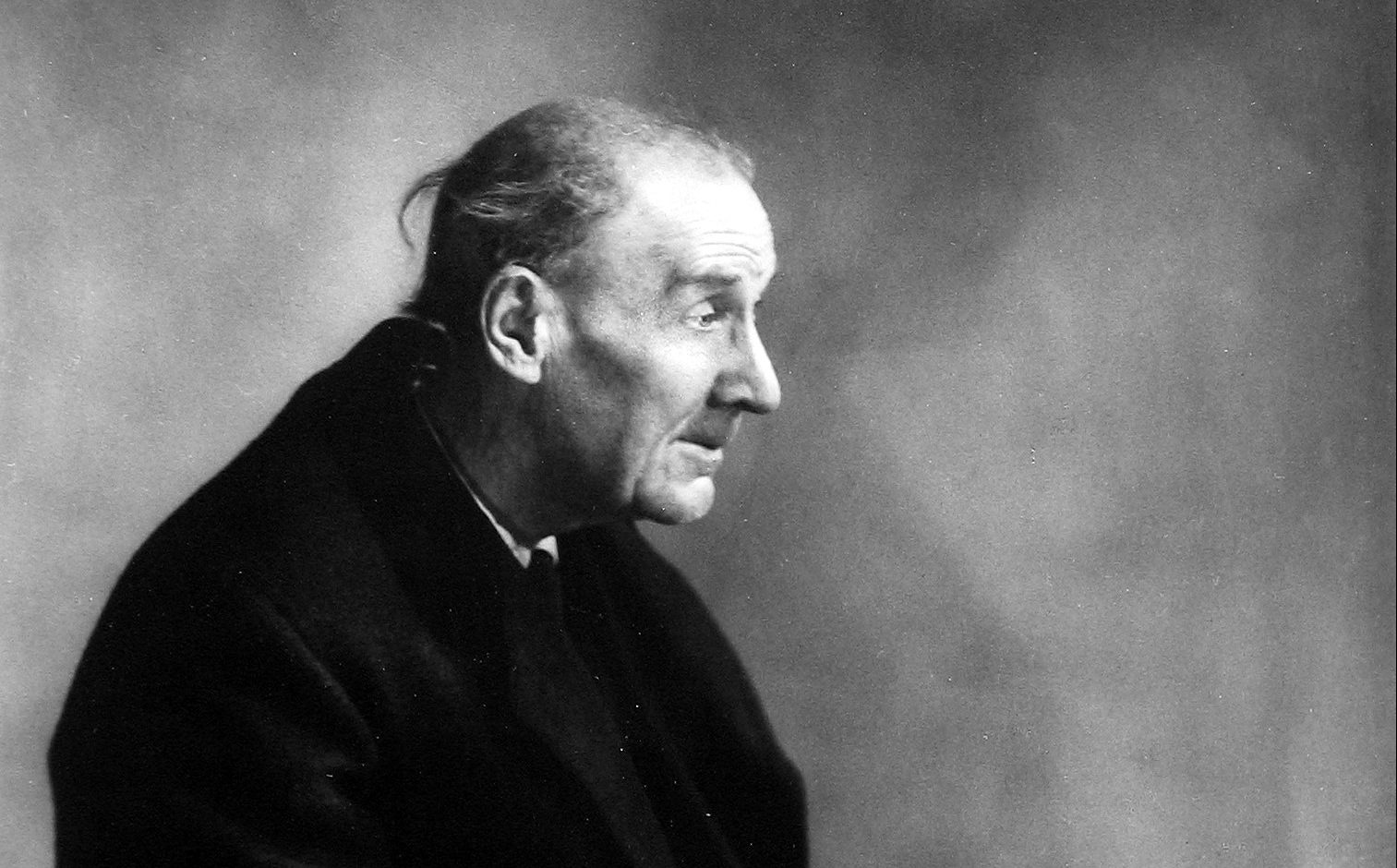Man Ray played an important role in Berenice Abbott’s early development as a photographer by introducing her to the work of Eugène Atget. The reclusive photographer refused to acknowledge that his work was art, or even photography, preferring to call his images of Paris streets and gardens ‘documents pour artistes’. Atget had become something of a legend amongst the Man Ray’s circle, being adopted as a proto-Surrealist and a figurehead for the movement. Abbott visited Atget and convinced him to come to her studio to have his portrait taken. The resulting photographs show the elderly photographer to be world-weary, his back stooped and his gaze distant. Having made prints of the photographs, Abbott went to Atget’s studio several days later to show him but discovered that he had died. Fearing that Atget’s colossal collection of prints and glass plates might be lost, Abbott set about trying to acquire them with the financial support of friends. She resultantly became the sole owner of the Atget collection and would toil tirelessly to garner Atget the recognition she knew him to deserve.
Abbott returned to New York in 1929, telling her friends in Paris that she was going for a six-week visit in order to find a publisher for the Atget collection. She found New York in the midst of its second great building boom and bought a small, hand-held camera to take photographs of the city streets which she planned to take back to Paris to show magazine editors. Seeing the massive artistic potential in New York, Abbott returned briefly to Paris and sold all her belongings apart from the Atget collection which she took back to New York. Abbott’s friends thought she was mad to leave her successful business and burgeoning fame in Paris, but she was determined to find a publisher for Atget’s photographs and was eager to return to New York.
In October 1929 the stock market crashed and the United States began to spiral into the Great Depression. Having left her profitable business in Paris, Abbott was forced to sell a share of the Atget collection to art dealer Julian Levy, who intended to exhibit and sell the prints. Levy found the market uninterested in Atget’s work, however, and was unable to sell it. He quickly resumed selling paintings. The Museum of Modern Art would acquire the Atget Collection from Abbott and Levy in 1968. It was the largest single acquisition in the history of the museum’s photography department
